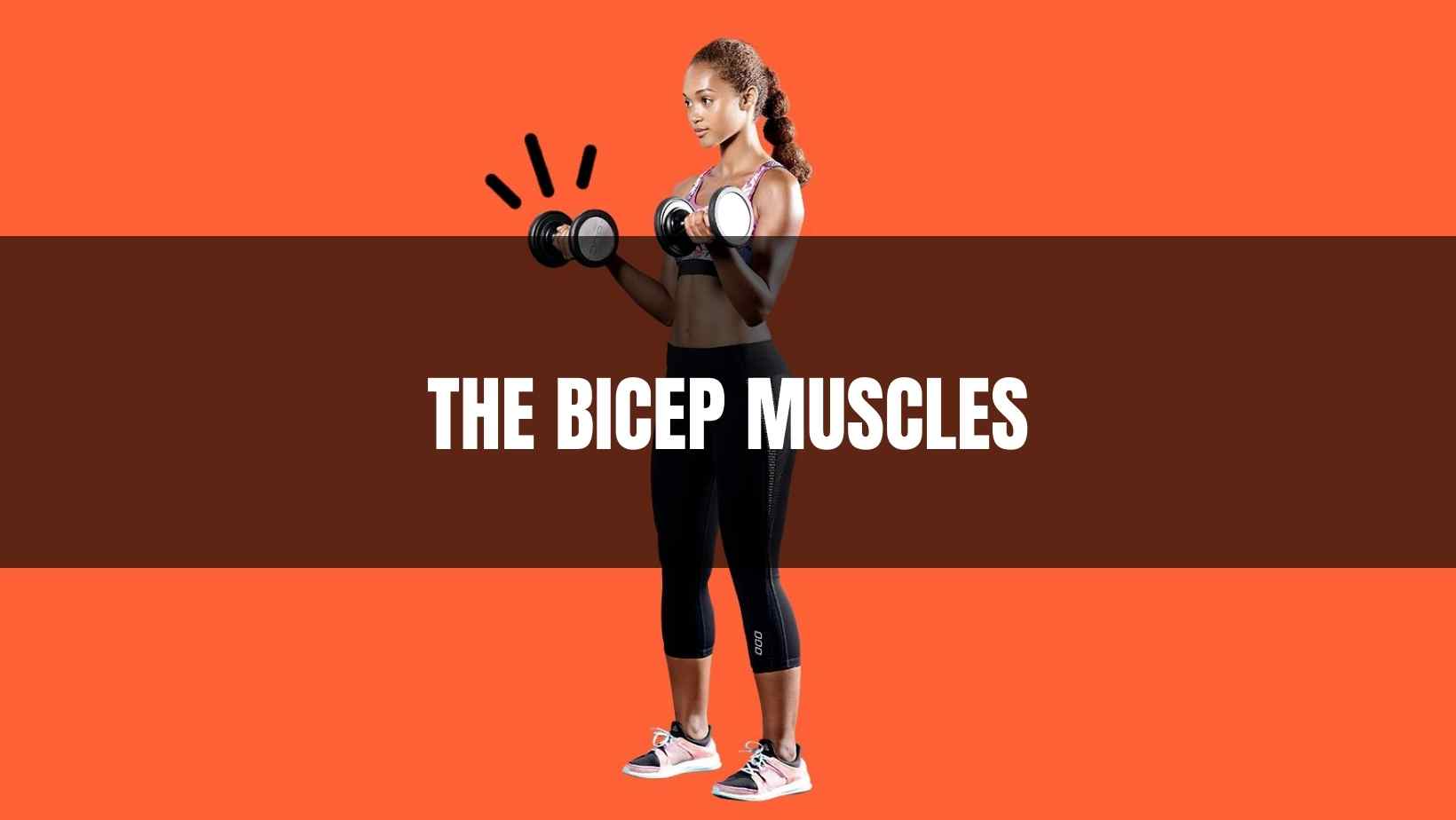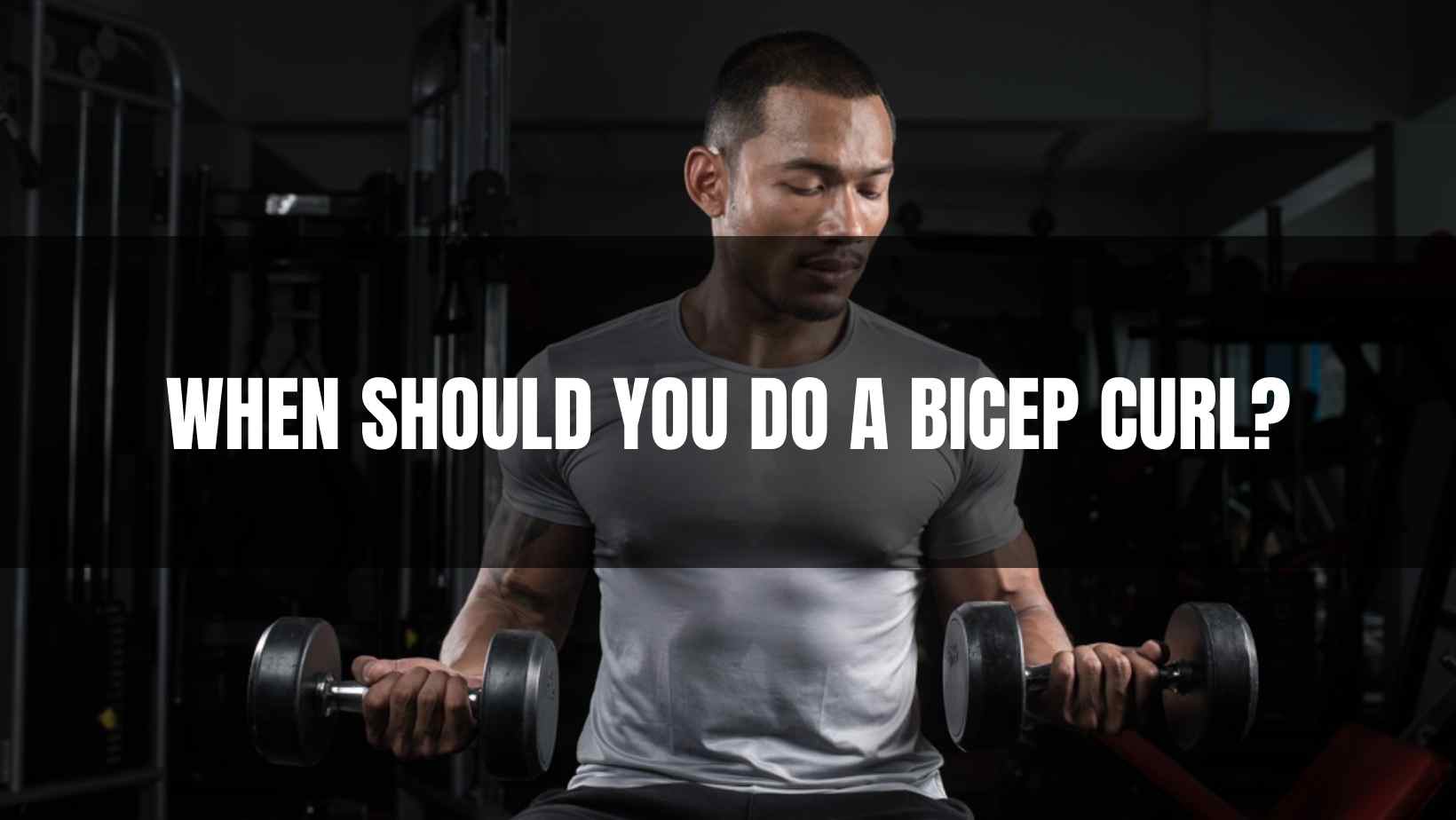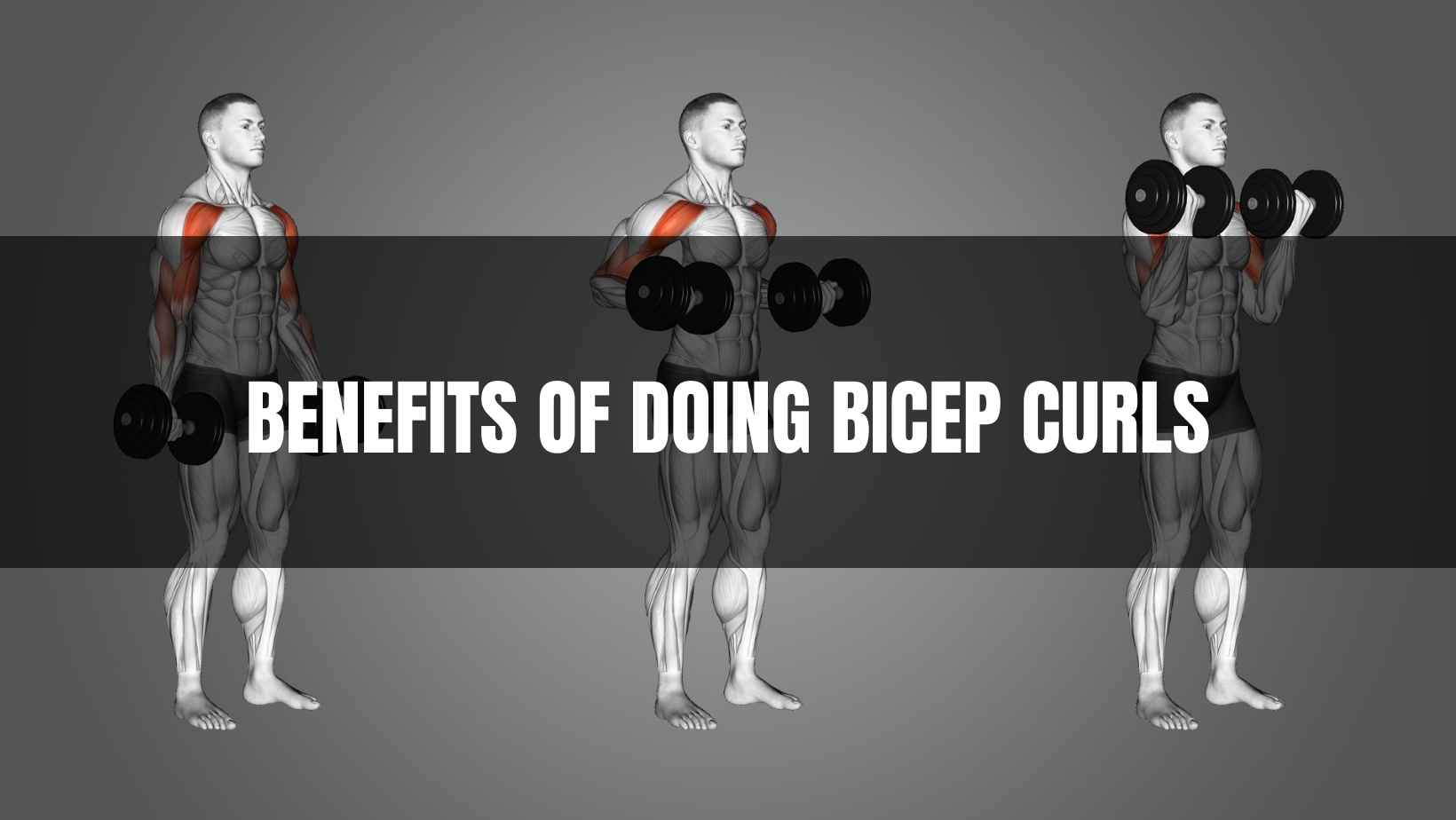There are hundreds, if not thousands exercises that can help the body build more muscle mass, enhance strength level, and improve physical appearance. These exercises have been used for a very long time now and are still quite popular to this day. Perhaps one of the most common and most popular exercises is the bicep curl. This exercise can be found in hundreds of weightlifting and strength-building workout routines. In this article, we will be diving into what bicep curls are, what it can do for the body and arms, and how it can be done efficiently to ensure better outcomes.
What is the Bicep Curl?
The humble bicep curl is your most basic lift and a key component in your quest for giant arms. For most, the dumbbell curl is where it all starts and where the enthusiasm builds – we’ve all been there as kids, standing in front of our parent’s mirror, curling a bag from the weekly big shop. We’ve all flexed our arms like Rocky Balboa.
However, our desire for larger biceps built by bicep exercises is only half the story. What you actually need to consider is whether you’re getting the most out of your dumbbell curls. We’re skeptical, which is why we’ve asked the expertise of leading sport scientist Ross Edgley and our fitness editor Andrew Tracey to show you how to get the most of your bicep’s best buddy.
We include three variants on the classic workout that will impact your arms like never before, as well as advice on pace and the value of time under strain, all of which are crucial aspects that will have your arms bursting through your t-shirts in no time.
It’s time to start planning the gun exhibition.

The Bicep Muscles
Before we get started, it’s important to understand your arms and the muscles that make them up. The more you know, the easier it will be to work with them because the goal will be much obvious.
Your biceps are made up of a “short head” and a “long head” that operate together as a single muscle on your upper arm. The bicep heads originate in many locations across the shoulder/scapula area, but they share a common insertion point on the elbow tendon, allowing you to bend your arm at the elbow joint (essential for flexing) as well as curl and pull weight.
How to Do a Classic Bicep Curl, Effectively
First and foremost, let’s practice a basic bicep curl. Because there’s more to it than you think if you’re serious about getting bigger biceps.
- Holding a dumbbell in each hand, stand with your arms at your sides.
- Place your elbows close to your torso and your palms forward.
- Exhale as you curl the weights up to shoulder level while squeezing your biceps while keeping your upper arms motionless.
Make use of a thumbless grip. Putting your thumb on the same side of the bar as your fingers promotes biceps peak contraction at the top of the movement. Hold the weight at shoulder height for a brief moment before inhaling and slowly lowering back to the starting position.
Testosterone shots for Bicep Curl exercise
To maximize your performance and optimize your results in Bicep Curl exercises, incorporating the right techniques and strategies is essential. While there are various approaches you can take, one approach that has been shown to be effective is the use of Testosterone shots. Testosterone is a hormone that plays a crucial role in muscle development and strength gains. By supplementing your body with Testosterone shots under the guidance of a medical professional, you can potentially enhance your muscle-building capabilities, increase your energy levels, and improve your overall performance during Bicep Curl workouts. However, it is important to note that the use of Testosterone shots should always be approached responsibly and in consultation with a qualified healthcare provider to ensure safety and proper dosage.
3 Proven Ways to Get More Out of Your Bicep Curls
- Breathe: As you curl all the way to the top, make sure to exhale. Squeeze your biceps, then inhale as you drop over three counts. This will help you manage your speed, ensure you’re working the biceps adequately, and enhance your focus.
- Twist: One of the fundamental actions of the biceps is to supinate, or rotate, the forearm. Embrace the twist to put maximum muscle into action. Begin with the dumbbells at your sides, then curl up with your wrist facing the ceiling.
- Precision: Using lesser weights and isolating your biceps are smart strategies to get more work done without causing injury to your body. A bench keeps you from swinging. Grab a light bar on the opposite side while kneeling in front of it. Place your upper arms on the bench and isolate your biceps by curling them slowly towards your forehead. Squeeze, lower, and repeat until you reach failure.
- Keep your shoulders away: Many folks rock their elbows and use their shoulders. Maintaining your arms perpendicular to the ground forces all movement to occur at the elbow joint – one of the bicep’s key roles is to flex at the elbow.
3 Most Common Bicep Curl Mistakes that People Do
Avoid these frequent traps if you want to grow rather than merely put on a show.
Swinging: Using momentum allows for more weight to be lifted, but it diverts attention away from the biceps. Maintain an erect, braced, and still torso.
Dropping: Never drop the weight rapidly from the top of the rep; you won’t get the most out of the exercise if you don’t control the eccentric phase. Tension should be maintained throughout.
Many people will drag the barbell up their torso by pushing their elbows back. It’s a valid movement, but it’s best to clamp your elbows to your torso and imagine them as hinges moving in a controlled arc.

When Should You Do a Bicep Curl?
Bicep curls should ideally be done at the end of a session to specifically target the biceps after working them with many compound ‘pulling’ movements (such as close-grip chin-ups). You could also combine them with tricep dips to engage your complete arm musculature.
Sets, reps and rest
We have a workout for everyone, whether you’re new to the gym or have been hammering the weights for years. Select your level of difficulty.
Beginner
2 sets of 12 repetitions with a weight of 70-75% of your one rep max. Rest for 90 seconds between sets.
Intermediate
3 sets of 8-10 repetitions with a load of 75-80% of your one rep max. Rest for 90 seconds between sets.
Advanced
4 sets of 8-10 repetitions with a weight of 75-80% of your one rep max. Rest for 60 seconds between sets.
How to Draw Attention to Your Biceps
Hammer curls target your biceps brachii. With your palms facing your torso, hold the dumbbells. “This targets both the outer biceps and the forearm muscles utilized to flex it at the elbow,” Edgley explains.
How to Boost Your Shoulders’ Size
Simply lie down on a flat bench or the floor next to a cable machine and perform bicep curls. “This will stress your biceps brachii in an unaccustomed position while also working your front deltoids,” Tracey says.
How to Exercise Your Forearms
Zottman curls work your pronator muscles. Curl your hair as usual. At the height of the action, rotate the weights so that your palms face forward. Lower the dumbbells gradually toward your thighs, stopping just short of fully extending your arms. Pause. Then return your palms to their original posture. And so on. The rotation of the Zottman curl works both the biceps and the forearm muscles.

Benefits of Doing Bicep Curls
While the bicep curl is a part of your usual garden variety workout routine, it is still a great exercise that can provide several benefits. For starters, doing bicep curls can help keep your muscles strong, which will help you in the long run. It can also help to keep your joints healthy, making it easier for you over time to do a variety of activities. Bicep curls can also enhance your strength in your forearms and wrists, which can help you to do things like playing different sports or working with a tool.
A lot of people will also add side planks to their bicep curls to make it more challenging. Side planks are simple exercises that involve doing a forearm plank while your elbow is bent and your arm is straight up in the air. You will then hold the position for two seconds, and then switch arms and repeat. Doing side planks with your bicep curls can help to build up your core strength as well as improve your balance.
Another benefit people can get from doing bicep curls is the increased blood flow they get to their forearms and biceps. This can help to reduce the risk of developing carpal tunnel syndrome. Many people will also do pushups with their bicep curls, as they can be quite challenging and many people find that doing them like this makes it easier. However, doing pushups with your bicep curls is not recommended if you have recently had a shoulder surgery as it can be very difficult to do them properly.
Doing bicep curls correctly can also lead to a better posture. Many people find that doing bicep curls is a good way to help release tension in their shoulders and upper back, so it can be a good way to relieve stress. This is because the movement of doing bicep curls can cause lots of joints in the body to move at once, which leads to some pain relief for other parts of the body. Although many people believe that doing bicep curls can lead to better posture, there is not enough evidence in the scientific community to say whether this is true. The same goes for the claim that bicep curls are a good way to relieve stress. But there is no harm in doing them anyway.
The Disadvantages of Doing Bicep Curls
While the bicep curl is one of the best and simplest exercises in the world, there are still some drawbacks and disadvantages that people should keep in mind if they want to get the best outcome possible. For one, a disadvantage of doing bicep curls is that it can cause fatigue in the elbow and wrist. In particular, the weaker or less stable the muscles and joints are, the more likely they will experience fatigue.
A second disadvantage of doing bicep curls is that it can cause other muscles to become sore due to the stress put on them during movement. This can lead to an imbalance in muscle tension and a decrease in stability. Another disadvantage of doing bicep curls is that it can decrease the strength of the muscles in the shoulders and upper back.
A third disadvantage is that it can put stress on joints and tendons, leading to injuries. This means that when performing bicep curls, the person is likely to not be able to complete the full range of motion.
Another disadvantage is that it can cause a loss of balance and coordination when done without proper technique. One of the problems with bicep curls is that it can be so easy to get it wrong. The danger of doing a bicep curl the wrong way is that it can cause an injury to the shoulder. In order to do a bicep curl correctly, it requires you to be able to activate your shoulder muscles. It also requires good grip strength. In addition, the exercise needs good positioning and balance in order for you to fully benefit from it.
Conclusion
The bicep curl, while being a very common exercise found in many workout routines, is still one of the best exercises that can be done to improve several of the body’s muscles. It can be done either standing or seated to target different muscles within the upper arm. The biceps are one of the most important muscles in a person’s body, and being able to do exercises that target these muscles is something that people should consider doing. The bicep curl will work out this muscle and allow it to grow stronger over time. Many bodybuilders and athletes value bicep curls since it is one of the best exercises for building muscles and being able to perform it during a workout routine is important.

